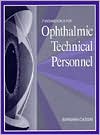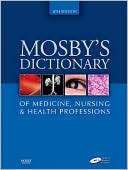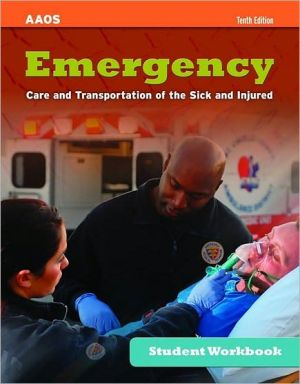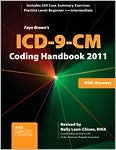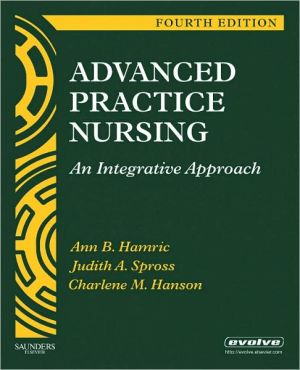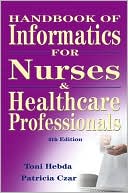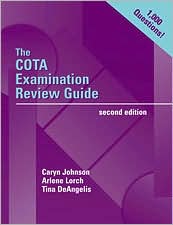Fundamentals for Ophthalmic Technical Personnel
This textbook discusses ophthalmic sciences, neuroanatomy, and optics in detail, and includes full coverage of technical skills and pathology. The skills are explained in an easy-to-follow procedure format, with many illustrations. It includes numerous examples to better convey concepts, as well as an appendix and practice problems to demonstrate ophthalmic calculations.\ \ \ The book contains predominantly black-and-white illustrations, with some color illustrations.\
Search in google:
This textbook discusses ophthalmic sciences, neuroanatomy, and optics in detail, and includes full coverage of technical skills and pathology. The skills are explained in an easy-to-follow procedure format, with many illustrations. It includes numerous examples to better convey concepts, as well as an appendix and practice problems to demonstrate ophthalmic calculations. John W. Chandler This text provides comprehensive educational instruction for ophthalmic technical personnel on how to perform various tasks as well as their practical theoretical basis and how to avoid technical and other pitfalls. Chapters and important sections begin with lists of learning objectives and end with a series of questions. The answers are located in the appendix. It is intended for use along with interactive instruction in the education of beginning students. The first third of the book provides basic science information and assumes that reader does not have a science background. The concept and layout of the book are superb and show the author's extensive experience in the provision of high quality education. For those who have heard the author lecture, it is easy to correctly imagine the high quality of the text and accompanying figures and tables. The entire book is filled with nuggets that ophthalmology residents could also benefit from learning. The illustrations are clear and appropriately labeled. The color and most of the black-and-white photographs are of good quality. Many highlighted tables describe specific techniques step-by-step in conjunction within drawings and photographs. Other important material is clearly marked. This new book is an important and significant contribution that gives precise, clear information on how to correctly perform ophthalmic tests as well as their biological basis. The format and excellent illustrative material make reading it an active process. This book should be a heavily used part of the library of all ophthalmic technical personnel.
Section I. Basic Ophthalmic Sciences: Eyeball Anatomy and Physiology. Anatomy of the Skull and Orbit. Blood Supply. Pharmacology. Photochemistry of Vision. Section II. Neuroanatomy: Nervous System. Sensory Visual Pathway. Central Nervous System. Supranuclear Mechanisms. Peripheral Nervous System. Autonomic Nervous System. Section III. Optics: Physical Optics. Geometric Optics. Physiological Optics. Section IV. Ophthalmic Technical Skills: Basic Skills: History Taking. Visual Assessment. Clinical Visual Psychophysics. Biomicroscopy. Tonometry. Refractometry. Lensometry. Keratometry. Interpupillary Distance. Exophthalmometry. Biometry. Introduction to Perimetry. Manual Perimetry. Automated Perimetry. Ocular Motility: Binocular Function. Ocular Motility: Strabismus Evaluation. Ocular Motility: Incomitant Deviations. Contact Lenses. Ophthalmic Photography. Surgical Assisting. Examination Strategy. Section V. Abnormalities of the Eyes: Eye Disorders. Eye Diseases. Appendices. Index.
\ From The CriticsReviewer: John W. Chandler, MD, FACS(University of Washington School of Medicine)\ Description: This text provides comprehensive educational instruction for ophthalmic technical personnel on how to perform various tasks as well as their practical theoretical basis and how to avoid technical and other pitfalls.\ Purpose: Chapters and important sections begin with lists of learning objectives and end with a series of questions. The answers are located in the appendix.\ Audience: It is intended for use along with interactive instruction in the education of beginning students. The first third of the book provides basic science information and assumes that reader does not have a science background.\ Features: The concept and layout of the book are superb and show the author's extensive experience in the provision of high quality education. For those who have heard the author lecture, it is easy to correctly imagine the high quality of the text and accompanying figures and tables. The entire book is filled with nuggets that ophthalmology residents could also benefit from learning. The illustrations are clear and appropriately labeled. The color and most of the black-and-white photographs are of good quality. Many highlighted tables describe specific techniques step-by-step in conjunction within drawings and photographs. Other important material is clearly marked.\ Assessment: This new book is an important and significant contribution that gives precise, clear information on how to correctly perform ophthalmic tests as well as their biological basis. The format and excellent illustrative material make reading it an active process. This book should be a heavily used part of the library of all ophthalmic technical personnel.\ \ \ \ \ John W. ChandlerThis text provides comprehensive educational instruction for ophthalmic technical personnel on how to perform various tasks as well as their practical theoretical basis and how to avoid technical and other pitfalls. Chapters and important sections begin with lists of learning objectives and end with a series of questions. The answers are located in the appendix. It is intended for use along with interactive instruction in the education of beginning students. The first third of the book provides basic science information and assumes that reader does not have a science background. The concept and layout of the book are superb and show the author's extensive experience in the provision of high quality education. For those who have heard the author lecture, it is easy to correctly imagine the high quality of the text and accompanying figures and tables. The entire book is filled with nuggets that ophthalmology residents could also benefit from learning. The illustrations are clear and appropriately labeled. The color and most of the black-and-white photographs are of good quality. Many highlighted tables describe specific techniques step-by-step in conjunction within drawings and photographs. Other important material is clearly marked. This new book is an important and significant contribution that gives precise, clear information on how to correctly perform ophthalmic tests as well as their biological basis. The format and excellent illustrative material make reading it an active process. This book should be a heavily used part of the library of all ophthalmic technical personnel.\ \ \ 5 Stars! from Doody\ \
